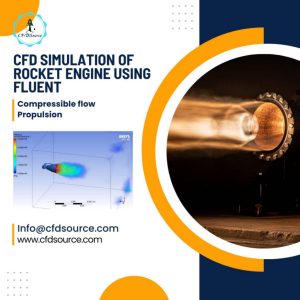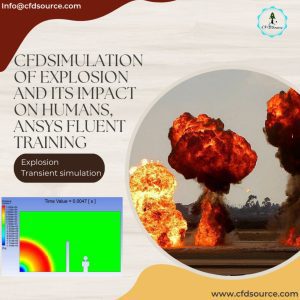Before We Begin: The CFDSource Philosophy for Ensuring Project Success
After 15 years in this field, I’ve seen one thing consistently separate successful projects from the ones that drain budgets and deliver questionable results: the process. It’s not just about having powerful software; it’s about a disciplined approach. Executing Our 5-Step CFD Project Workflow properly is the difference between getting a colorful picture and getting a real engineering insight that saves you money. It’s the core of [our approach to CFD consulting] and ensures we’re solving the right problem from day one.
Aligning on Your Goals: More Than Just a Simulation, a Business Solution
We often get requests like, “Can you run a thermal analysis on this heat sink?” And we can, but the first question I always ask back is, “Why?” Is the goal to reduce the peak temperature by 5°C to improve component lifespan? Or is it to reduce material cost by finding a new design that cools just as well as the old one? The “why” dictates the entire project. One is a performance problem; the other is a cost-optimization problem.
Step 1: The Deep Dive – Defining Your Project Scope & Objectives
This is where we put on our engineering hats together. 🤝 We treat the first meeting as a collaborative design review. We’ll ask a lot of questions about operating conditions, materials, and what you’ve tried before. We need to get inside your head and understand the real-world constraints you’re facing. This isn’t about filling out a form; it’s a technical conversation to establish a rock-solid foundation for the simulation work to come.
Clarifying Technical Goals vs. Business Outcomes
There’s a huge difference between a technical task and a business objective, and getting this clear upfront is crucial. It’s a discussion we always have, especially when clients are weighing the pros and cons of [building an in-house CFD team versus outsourcing the work]. An unclear brief leads to wasted simulation cycles.
Here’s how we see the difference:
| Technical Request (The “What”) | Business Objective (The “Why”) |
| “Simulate airflow over the car body.” | “Identify regions to modify to reduce aerodynamic drag by 3%.” |
| “Model heat transfer in this server rack.” | “Ensure all CPU core temperatures remain below 85°C under max load.” |
| “Analyze the pressure drop in the valve.” | “Reduce the pressure drop to improve system efficiency and lower energy costs.” |
The Critical Role of the Non-Disclosure Agreement (NDA) from Day One
Let’s be blunt: your ideas are your intellectual property. Before we even discuss the sensitive details of your project, we sign an NDA. This is a non-negotiable step for us. It’s a simple matter of professional respect and it ensures a secure environment where we can speak freely about your design challenges and proprietary data. It’s the bedrock of trust for any serious engineering collaboration.
Step 2: Engineering the Foundation – Geometry Cleanup & High-Fidelity Meshing
You’ve heard the phrase “garbage in, garbage out.” In CFD, the geometry and mesh are the “in.” A simulation is only as good as the mesh it’s run on. We spend a significant amount of time here, cleaning up CAD files, removing features that are irrelevant to the physics (like small fillets or logos), and then building a mesh that accurately captures the fluid dynamics, especially in critical areas.
Why We Obsess Over Mesh Quality (y+, Skewness): The Key to Accurate Results in ANSYS Fluent & CFX
I remember a project years ago—a cyclone separator—where the initial results were just completely wrong. The simulation said it was barely separating particles. The problem wasn’t the physics model; it was a poor mesh near the wall that couldn’t capture the vortex correctly. A few days of careful, targeted re-meshing to get the y+ value right completely changed the outcome and matched the client’s experimental data. This is why a core part of our CFD project workflow involves this painstaking proccess. It’s a step that heavily influences the final accuracy and also [a major factor in the cost of a CFD project]. We check for things like skewness and orthogonal quality to ensure the digital model is a true representation of reality. ⚙️
Step 3: Physics & Solver Configuration – Selecting the Right Tools for the Job
Once we have a robust mesh, it’s time to tell the software what physics to solve for. This is another area where experience pays off. Do we need to account for radiation? Is the flow turbulent or laminar? Should we use an ideal gas model or a real gas model? Choosing the wrong turbulence model, for example, can give you results that look plausible but are fundamentally incorrect for your specific application.
Choosing the Correct Turbulence Model (e.g., k-ε vs. k-ω SST) for Your Specific Application
This choice is less about software settings and more about physics. Using the standard k-epsilon model for flow separating over a curved surface is a classic mistake. It’ll give you an answer, but it’ll be the wrong one. For things like airfoils, or when you’re doing a detailed [thermal analysis of electronics], the k-omega SST model is almost always a better bet because it’s more accurate near the walls. The data tells a story, and its our job to translate it using the right physical models.
Setting Up Boundary Conditions That Mirror Real-World Physics
This is where the simulation meets reality. If a fan in your device has a known performance curve (flow rate vs. pressure), we use that curve. We don’t just guess a velocity. If a component generates 10W of heat, we apply a 10W heat source. Accurately defining these conditions is a non-negotiable part of the process, ensuring the simulation isn’t just a digital fantasy.
Step 4: Simulation Execution & Proactive Monitoring
Hitting “solve” is the start, not the end, of this step. 🖥️ We don’t just walk away and hope for the best. We actively monitor the solution as it runs. Are the residuals dropping? Are key values like drag, lift, or maximum temperature stabilizing? This proactive monitoring allows us to spot potential issues—like divergence—early on, saving hours, or even days, of computation time.
Ensuring Convergence: How We Troubleshoot and Validate Mid-Simulation
When a simulation doesn’t converge, it’s not a failure; it’s the simulation telling us something is wrong. It could be an issue with the mesh in a specific area, a physical setup that’s unstable, or a time step that’s too aggressive. We see it as a diagnostic tool. We’ll pause, investigate the solution, and make adjustments. This iterative process is far more effective than letting a flawed simulation run to completion.
Regular Progress Updates: Keeping You in the Loop
We believe in transparency. You can expect concise updates from us throughout the project. It might be a quick email with an intermediate plot or a short call to discuss an unexpected finding. Our goal is to make sure there are no surprises at the end. You’ll know how things are progressing every step of the way.
Step 5: Analysis, Validation, and the Final Actionable Report
This is where the real value is delivered. The simulation is done, but the data is just a collection of numbers until we analyze it. This final step is all about turning those numbers into clear, actionable engineering insights that you can use to make decisions.
Beyond Pretty Pictures: Delivering Actionable Insights and Engineering Recommendations
Anyone can generate a colorful contour plot. That’s the easy part. Our focus is on answering the “So what?” question. We don’t just show you a hotspot; we explain why it’s happening and propose specific, practical solutions. For example: “The recirculation zone behind the bracket is causing this hotspot. We recommend adding three 5mm perforations in this location to break up the zone and improve airflow.” This is the core reason many companies see the [advantages of working with a fluid dynamics consultant]; we bridge the gap between complex data and practical product improvements.
Our Validation Process: Cross-Checking Against Experimental Data & Published Research
How do we know the results are right? Whenever possible, we validate them. If you have experimental data, we’ll compare our simulation results directly against it. If not, we’ll find a similar case study or a relevant academic paper to perform a sanity check. This step provides confidence that the conclusions are based on a sound and reliable simulation.
What Makes the CFDSource Workflow Different?
It’s our commitment to going beyond the simulation itself. We see CFD as a tool to solve a business problem, whether that’s improving performance, reducing cost, or increasing safety. It’s a holistic view that combines technical rigor with a clear focus on the final business outcome.
A Partnership Approach: Your Team and Our Experts, Working Together
We function as an extension of your team. We bring the deep CFD expertise, you bring the deep product knowlege. By combining these two, we can achieve results much more efficiently than working in silos. This collaborative spirit is built into every stage of our CFD project workflow, ensuring the final output is not just technically sound, but also directly relevant to your specific challenges and goals.


